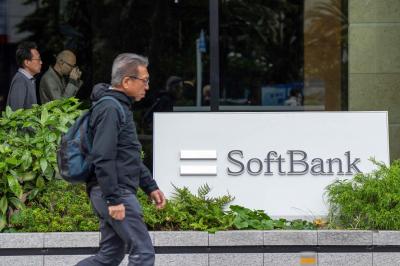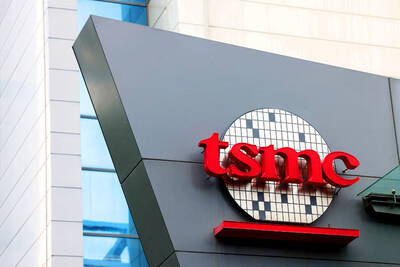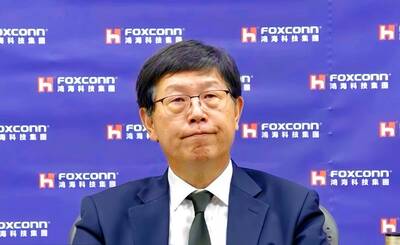The US Federal Reserve may need to double its benchmark interest rate to at least 10 percent by 2030 to contain inflation, sparking a political showdown that could challenge its independence, former Fed chairman Alan Greenspan said.
Slowing productivity and rising wages abroad will probably cause US consumer prices to climb in the next quarter century, Greenspan wrote in his book The Age of Turbulence: Adventures in a New World, published by Penguin Press.
His outlook includes a reversal of many of the trends that aided the success of his own tenure at the Fed.
There are already some signs that political scrutiny is rising. US Democrats including Barney Frank, who heads the House Financial Services Committee, called last week for a cut in interest rates.
"Federal Reserve independence is not something set in stone," Greenspan wrote.
Greenspan, 81, led the Fed for 18 years until January last year.
"The dysfunctional state of American politics does not give me great confidence in the short run" and there may be "a return of populist, anti-Fed rhetoric," he wrote.
The book is scheduled for publication tomorrow. The Wall Street Journal published an account on its Web site yesterday after buying a copy at a New York-area bookstore.
To keep inflation under 2 percent, "the Fed, given my scenario, would have to constrain monetary expansion so drastically that it could temporarily drive up interest rates into the double-digit range not seen since the days of Paul Volcker," Greenspan wrote.
Volcker was Greenspan's predecessor and faced criticism from members of Congress as he lifted borrowing costs to rein in prices, sending the economy into a recession in 1980 and 1981.
Fed Chairman Ben Bernanke, who took the helm in February of last year, faces pressure to cut rates after a housing recession spurred a sell-off in credit markets and the first loss of jobs in four years.
The Federal Open Market Committee will cut the benchmark by a quarter point on Tuesday to 5 percent, a median forecast in a Bloomberg News survey of economists predicted.
Frank said in a Sept. 7 statement that the Fed should make "a meaningful interest-rate cut" to help the economy.
Democratic US Representative Carolyn Maloney said the same day the cut was "no longer a question for the Fed."
Greenspan helped guide the longest economic expansion in US history, lasting from 1991 to 2001. Growth averaged a 3 percent annualized rate during the former Fed chief's time at the central bank.
The economy will probably slow down to a pace of less than 2.5 percent on average from now until 2030, Greenspan forecast in the book.
Consumer prices, which increased at an average annual rate of 3.1 percent during Greenspan's tenure, will likely climb by 4.5 percent or more a year in the future, he wrote.
Ten-year Treasury yields may average 8 percent by 2030, he said.
"How the Federal Reserve responds to a re-emergence of inflation" will have "a profound effect not only on how the US economy of 2030 turns out but also, by extension, on our trading partners worldwide," Greenspan wrote in the book.
The former chairman built his projection on three economic shifts that he said can already be seen.
First, the 1990s boom in productivity, which allowed workers in the US to produce more goods and services without pushing up prices, is fading.
"There is little doubt, however, that the burst of US non-farm productivity growth from 1995 to 2002 has given way to a lessened pace of growth," Greenspan wrote.
Productivity gains averaged a 1.7 percent annual rate in the first six months of this year, down from 3.6 percent during the high-technology boom of 1999.
Greenspan forecast a long-term average of 2 percent for increases in output per hour.
Greenspan also forecast an end to the anti-inflation pressures from the inclusion of China and other emerging economies into the global trading system.
US wage earners have suffered and consumers have benefited from a one-time shift of millions of workers into the world labor force. The former chairman once defined globalization as the elimination of borders in the production of goods and services.
"The continuing acceleration of the flow of workers to competitive markets during the past decade has been a potent disinflationary force," Greenspan wrote. "That acceleration has held down inflation virtually uniformly across the globe."
That force may be coming to an end.
"The rate of flow of workers to competitive labor markets will eventually slow and as a result, disinflationary pressures should start to lift," Greenspan wrote. "China's wage growth should mount, as should its rate of inflation. The first signs are likely to be a rise of export prices, best measured by the prices of Chinese goods imported into the United States."
US Labor Department figures showed yesterday that costs of imported Chinese products rose for a fourth straight month last month.
The third source of pressure on inflation will come from US government budget deficits.

Japanese technology giant Softbank Group Corp said Tuesday it has sold its stake in Nvidia Corp, raising US$5.8 billion to pour into other investments. It also reported its profit nearly tripled in the first half of this fiscal year from a year earlier. Tokyo-based Softbank said it sold the stake in Silicon Vally-based Nvidia last month, a move that reflects its shift in focus to OpenAI, owner of the artificial intelligence (AI) chatbot ChatGPT. Softbank reported its profit in the April-to-September period soared to about 2.5 trillion yen (about US$13 billion). Its sales for the six month period rose 7.7 percent year-on-year

CRESTING WAVE: Companies are still buying in, but the shivers in the market could be the first signs that the AI wave has peaked and the collapse is upon the world Taiwan Semiconductor Manufacturing Co (TSMC, 台積電) yesterday reported a new monthly record of NT$367.47 billion (US$11.85 billion) in consolidated sales for last month thanks to global demand for artificial intelligence (AI) applications. Last month’s figure represented 16.9 percent annual growth, the slowest pace since February last year. On a monthly basis, sales rose 11 percent. Cumulative sales in the first 10 months of the year grew 33.8 percent year-on-year to NT$3.13 trillion, a record for the same period in the company’s history. However, the slowing growth in monthly sales last month highlights uncertainty over the sustainability of the AI boom even as

AI BOOST: Next year, the cloud and networking product business is expected to remain a key revenue pillar for the company, Hon Hai chairman Young Liu said Manufacturing giant Hon Hai Precision Industry Co (鴻海精密) yesterday posted its best third-quarter profit in the company’s history, backed by strong demand for artificial intelligence (AI) servers. Net profit expanded 17 percent annually to NT$57.67 billion (US$1.86 billion) from NT$44.36 billion, the company said. On a quarterly basis, net profit soared 30 percent from NT$44.36 billion, it said. Hon Hai, which is Apple Inc’s primary iPhone assembler and makes servers powered by Nvidia Corp’s AI accelerators, said earnings per share expanded to NT$4.15 from NT$3.55 a year earlier and NT$3.19 in the second quarter. Gross margin improved to 6.35 percent,

FAULTs BELOW: Asia is particularly susceptible to anything unfortunate happening to the AI industry, with tech companies hugely responsible for its market strength The sudden slump in Asia’s technology shares last week has jolted investors, serving as a stark reminder that the world-beating rally in artificial intelligence (AI) and semiconductor stocks might be nearing a short-term crest. The region’s sharpest decline since April — triggered by a tech-led sell-off on Wall Street — has refocused attention on cracks beneath the surface: the rally’s narrow breadth, heavy reliance on retail traders, and growing uncertainty around the timing of US Federal Reserve interest-rate cuts. Last week’s “sell-off is a reminder that Asia’s market structure is just more vulnerable,” Saxo Markets chief investment strategist Charu Chanana said in